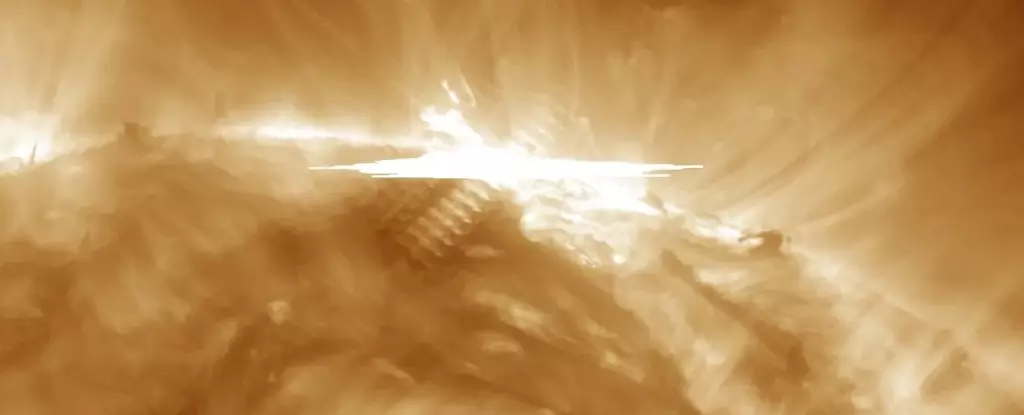The phenomenon of geomagnetic storms arises from the Sun’s dynamic environment, and in recent developments, such storms can heavily impact vital infrastructure and emergency services. The recent warning from the US Space Weather Prediction Center (SWPC) highlights the severity of geomagnetic disturbances that emerged following a coronal mass ejection (CME). This particular CME struck Earth on a Thursday morning, generating severe storm conditions that could complicate the ongoing recovery efforts from the destructive hurricanes Helene and Milton.
When a CME occurs, it ejects massive clouds of charged plasma into space, which interact with the Earth’s magnetic field. Upon impact, this can lead to a series of disruptions, categorized on a scale that ranges from G1 (minor) to G5 (extreme) geomagnetic storms. The SWPC reported that conditions escalated to G4 severity within a matter of hours, indicating a significant threat not only to communications and navigation systems but also to overarching emergency response operations.
As the Federal Emergency Management Agency (FEMA) and various state agencies continue to deal with the fallout from the hurricanes, the added complication of geomagnetic disturbances poses a dual threat. Not only are these agencies stretched thin resources-wise, but they must also contend with potential communication breakdowns and power grid instability. This situation underscores the essential need for careful monitoring and proactive measures, which necessitate efficient coordination between agencies to safeguard recovery operations.
One of the most concerning aspects of severe geomagnetic storms is their capability to disrupt satellites, which are pivotal for weather forecasting, communication, and navigation systems like GPS. Historical occurrences, such as the Halloween Storms of 2003, serve as reminders of the vast disruptions that can ensue, influencing power grids and satellite functions. The SWPC has already warned infrastructure operators to prepare for possible disruptions, drawing attention to the importance of preparedness in the face of natural events.
While the threat to critical systems is immense, there is a silver lining in the form of potential natural spectacles. For individuals located in favorable latitudes, this geomagnetic storm may offer a chance to witness vibrant auroras, typically visible near the poles. As conditions allow for these displays, it highlights a contrasting nature—where hazardous conditions can also result in awe-inspiring views. In an era dominated by technology, even smartphones may capture these celestial wonders, reflecting society’s adaptation to both embrace and document natural phenomena.
Geomagnetic storms present multifaceted challenges that affect emergency response efforts, infrastructure integrity, and everyday lives. As the Sun nears its peak activity period in its 11-year cycle, understanding the implications of such storms becomes increasingly crucial. Both public agencies and individuals must remain vigilant and prepared, recognizing that while nature can pose significant hazards, it also offers remarkable spectacles worthy of our attention. With ongoing monitoring and informed responses, the balance between safety and wonder can be proactively managed.


Leave a Reply